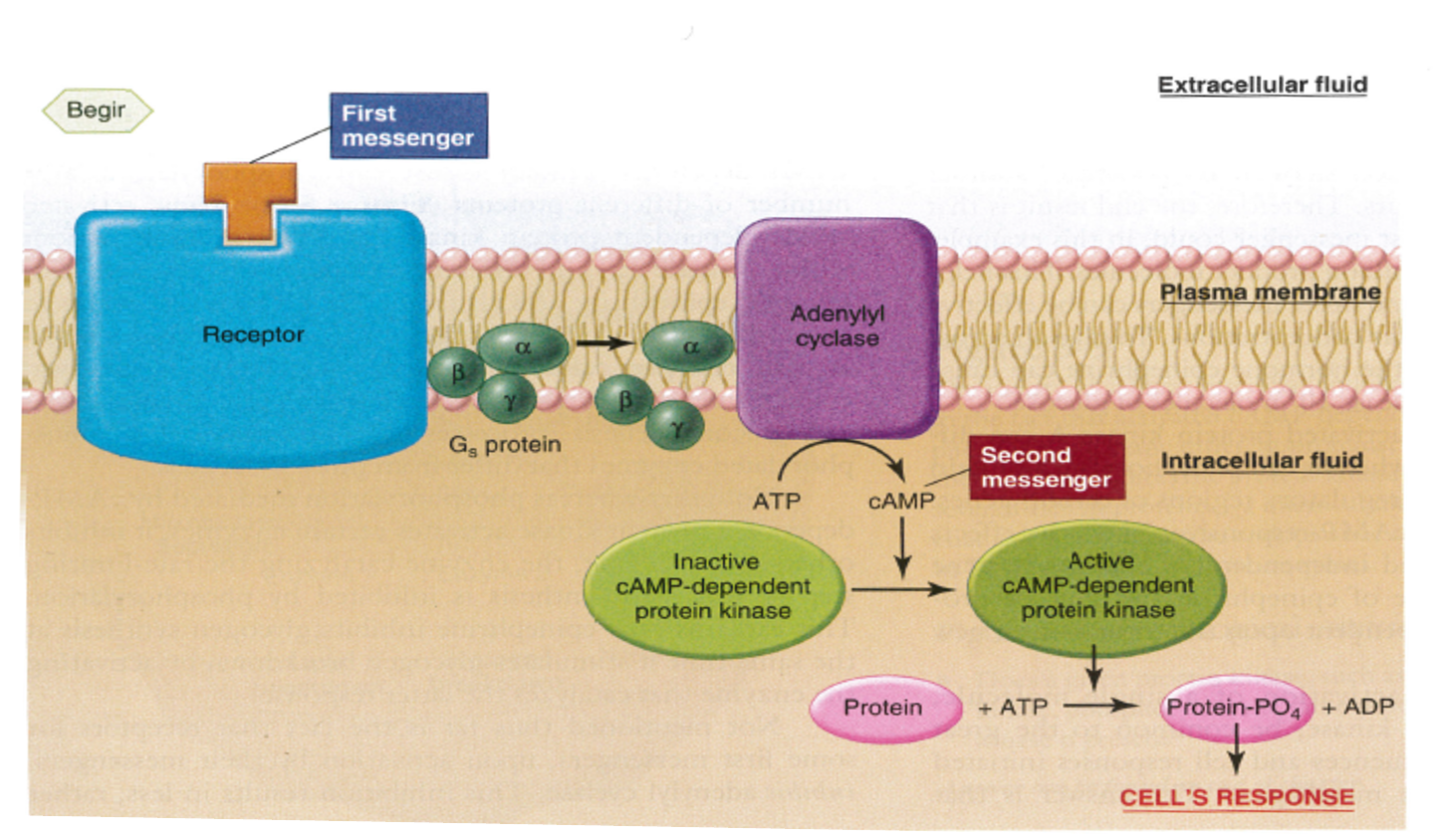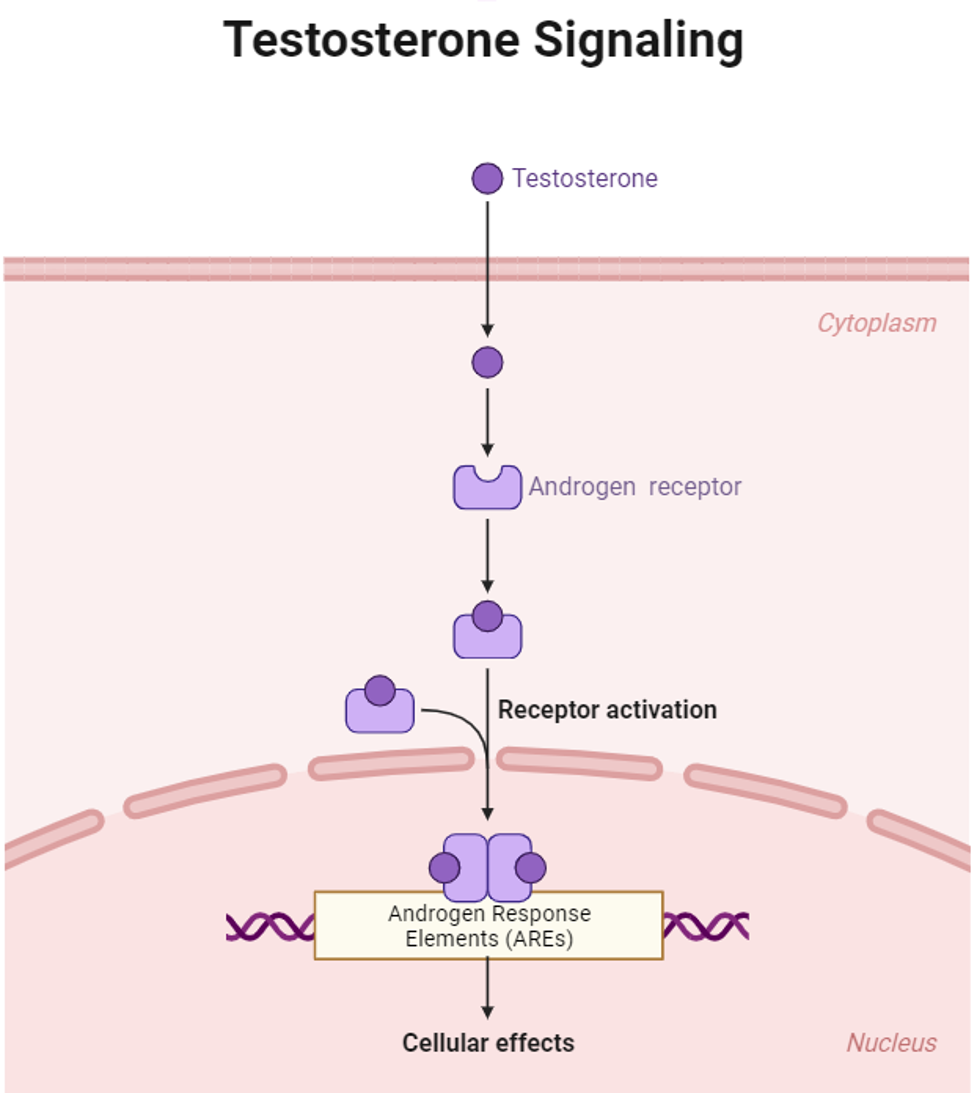2020 L1 - Introduction to the Module
1/39
There's no tags or description
Looks like no tags are added yet.
Name | Mastery | Learn | Test | Matching | Spaced |
|---|
No study sessions yet.
40 Terms
Cell Signalling
The process by which cells communicate with each other to coordinate various physiological functions. Catergorised by either:
Nature of signalling substance
Distance of communication
Local vs long distance signalling
Autocrine: Self-regulatory mechanism, a cell produces signalling molecules that act on its own receptors
Paracrine: Local signalling between nearby cells
Cell-cell contact signalling: signalling through gap junctions or cell adhesion molecules
Endocrine: Signalling through hormones that travel through the bloodstream to distant target cells
Small molecules, peptides & proteins
Key signalling molecules (e.g. endocrine hormones). The same molecule can have different cellular effects based on the target cell it binds to.
Cell signalling co-ordianates:
Homeostasis Maintenance
Organ Development and Differentiation
Immune Response
Nervous System Function
Cellular Growth and Division
Metabolism Regulation
Cell Survival and Apoptosis
Phosphorylation
The addition of a phosphate group to a molecule, which can affect protein function by altering its shape or activity.
Eukaryotic Cell
A type of cell that contains a nucleus and other organelles, encapsulated within membranes, unlike prokaryotic cells.
Autocrine Signalling
A form of cell signalling in which a cell secretes a signalling molecule that binds to receptors on its own surface, influencing its own activity.
Paracrine Signalling
A type of cell communication where a cell produces a signal to induce changes in nearby cells (e.g. immune responses/ blood clotting)
Endocrine Signalling
Long-distance cell communication where cells release hormones into the bloodstream to reach target cells throughout the body.
Synaptic Signalling
A form of cell signalling that occurs at synapses, where neurotransmitters are released from a neuron to signal to a target cell.
Contact-dependent signalling
Cell communication requiring direct physical contact between adjacent cells, often through membrane-bound proteins such as receptors and adhesion molecules, essential for immune responses and embryonic development.
2 response mechanisms
A rapid, non-genomic response
A delayed, genomic response
Rapid non-genomic responses
Quick, cellular responses, within seconds to minutes, without directly involving changes in gene expression.
These responses typically involve the activation of pre-existing proteins and signaling pathways
Delayed genomic response
A cellular response that involves changes in gene expression, typically taking hours to days, as the cell synthesizes new proteins in response to signaling molecules.
Ligands
Molecules that bind to specific receptors on the surface of a cell or within the cell's interior to initiate a cellular response.
Receptor
A protein molecule that receives and responds to chemical signals from outside the cell. Bind to specific signalling molecules (ligands).
Types of receptors
Membrane receptors- Receptors located on the cell's plasma membrane (cell surface)
Intracellular receptors- Receptors located inside the cell i.e.: within the cytoplasm or nucleus
Hormone receptors
Must bind to specific receptors to have an impact, these receptors can be inside the cell (in the cytosol) or on the plasma membrane.
Receptor level is not static, can be up-regulated or down-regulated.
Hormone action
Molecules binding to a receptor are either: Agonist, or Antagonist.
Receptors have varied affinity to ligand
Signal Transduction Pathway (STP)
A series of steps by which a signal on a cell's surface is converted into a specific cellular response.
Different pathways for hydrophobic and hydrophilic hormones.
Key part of many STPs is the ability to amplify the signal.
Signal Transduction Pathway (STP) relies on:
The receptor is intrinsically enzymatic.
Requires cytoplasmic JAK Kinase enzymes.
G-coupled protein receptors.
Cellular response to STP
Permeability, transport proteins or electrical state of plasma membrane
Cellular metabolism
Secretory activity
Rate of proliferation and differentiation
Contractile activity
Agonist
A substance that binds to a receptor and activates it to produce a biological response.
Antagonist
A substance that binds to a receptor but does not activate it, blocking the action of agonists (stops a response taking place)
Hydrophilic hormones
Hydrophilic hormone receptors are on plasma membrane of target cells (these signalling molecules are poorly lipid soluble.
Binding of the hormone to the receptor results in a conformational change.
Intrinsic enzymatic activity of a receptor
Many surface hormone receptors have an enzymatic domain, Conformational change of receptors activates the enzyme.
Many belong to enzyme class “Tyrosine Kinases”, which can activate cytoplasmic proteins.
Tyrosine Kinases
A class of enzymes that can transfer a phosphate group from ATP to a protein in a cell, often involved in cellular processes such as growth and differentiation.
One example of a tyrosine kinase in disease is BCR-ABL in chronic myeloid leukaemia - ~95% of all CML have this finding.
BCR-ABL
A fusion protein formed by the translocation of material from chromosome 9 (ABL gene) and chromosome 22 (BCR gene)
ABL = tyrosine kinase
BCR = serine/ threonine kinase
BCR-ABL is constitutively expressed and active and drives clonal expansion
JAK Kinases
Janus kinase proteins that are important in the signaling pathways of numerous cytokines and growth factors, playing a role in cellular responses. Activated by conformational change of receptor, then they activate target proteins (phosphorylation).
4 JAK proteins of relevance in humans: JAK 1-3, TYK 2
JAK is associated with the STAT pathway (signal transduction and transcription)
JAK in health
JAK 2 important for development and differentiation of myeloid cells - Mutations within JAK2 (V617F) is associated with abnormal clonal proliferation of myeloid cells.
Inhibition of JAK (with Ruxolitinib) can help treat:
Essential thrombocythemia (Excessive production of platelets)
Polycythaemia vera (Excessive production of RBCs)
Myelofibrosis (bone marrow is replaced by fibrous scar tissue, causing problems with blood cell production)
JAK inhibitors also pharmacologically used to tretat autoimmune diseases
G-protein Coupled Receptors (GPCR)
A large family of membrane receptors that play a role in cellular communication by activating G-proteins upon ligand binding. Binding of ligand causes a conformational change in the G-protein - α-subunit gains increased GTP affinity.
α-subunit binds to effector protein.
Adenylyl cyclase
An enzyme that produces cAMP by hydrolyzing ATP to produce cAMP,

Cyclic AMP (cAMP)
A second messenger that is important in many biological processes and can transmit signals inside the cell after activation of GPCRs.
The Cholera toxin exerts a physiological impact by disturbing cAMP homeostasis.
Cholera Toxin
A bacterial toxin that disrupts the regulation of cAMP, leading to severe dehydration and diarrhea.
Not all Vibrio cholera can produce toxin.
Hydrophobic Hormones
Requrire transport proteins (e.g. albumin, sex-hormone binding globulin) to move throughout the blood (forms reversible hormone-protein complex).
Fat-soluble hormones that can pass through cell membranes and bind to intracellular receptors, often leading to genomic responses.
Only free (i.e. not bound to a transport protein) hormone is biologically active.
Hydrophobic Hormone process
Lipid-soluble hormone diffuses through plasma membrane from blood
Hormone binds with receptor in cytoplasm, forming receptor-hormone complex
Receptor-hormone complex enters the nucleus and triggers gene transcription
Transcribed mRNA is translated into proteins that alter cell activity
Testosterone
A steroid hormone involved in male development and reproductive functions, influencing a range of physiological traits:
Facial hair growth
Voice deepening
Increase in muscle mass
Male pattern baldness
Effects mood, bone density and libido
Primarily secreted by the Leydig cells in the testes in males and secreted in smaller quantities by the adrenal glands in both sexes.

Testosterone dysregulation consequences
Hypogonadism - low T levels, causes delayed/ incomplete puberty. Sypmtoms include decreased musscle mass, fatigue, reduced libido
Gynecomastia - Imbalanced testosterone and oestrogen levels can lead to the development of breast tissue in males
Prostate cancer - Dysregulated androgen signaling is implicated in the development and progression of prostate cancer
Ion-channel coupled receptors
A type of receptor that opens or closes an ion channel in response to the binding of a ligand, allowing specific ions to flow across the membrane into the cytosol. This results in rapid changes in the membrane potential of the target cell.
Feedback Regulation in Signalling
The processes by which a cell regulates its signaling pathways through positive or negative feedback mechanisms.
Intensity and strength of the signal can be altered, suppressed or increased via feedback.